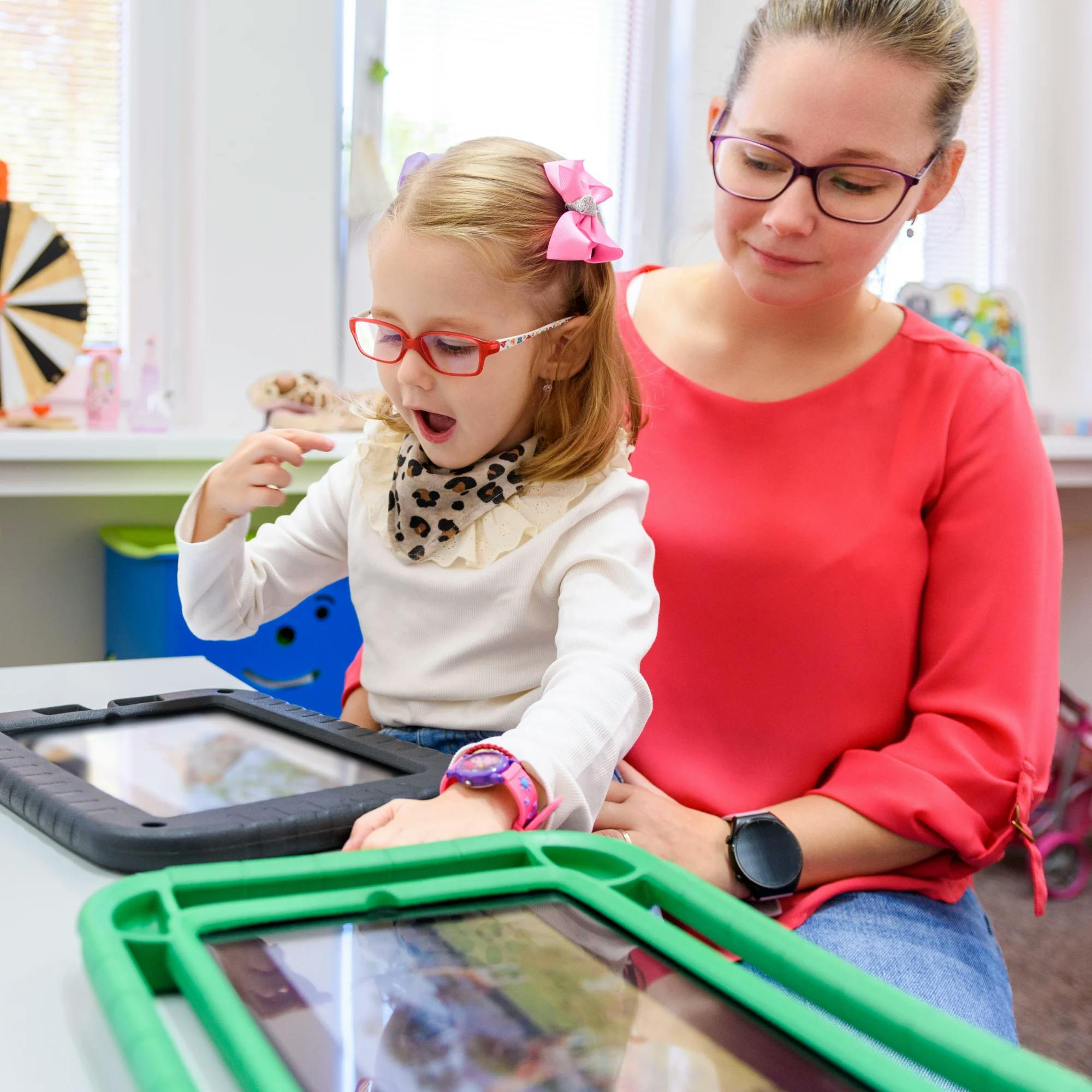An AAC device helps people who can’t rely on speech to communicate. “Augmentative and alternative communication” (AAC) is an umbrella term that covers many methods that either support or replace spoken communication. You might not know this, but you use AAC every day! Passing someone a note, waving goodbye, pointing to something, and giving a thumbs-up without speaking are all forms of AAC.
AAC is made up of two categories: augmentative and alternative communication.
Augmentative communication adds to someone’s speech. These are devices that support an individual’s natural speech output. They supplement or enhance your speech. For example, a portable amplifier can increase the volume of your speech when you’re in a loud environment.
Alternative communication is used instead of speech. Alternative communication devices replace one’s natural speech output entirely if they’reunable to communicate verbally. For example, a voice output communication aid (VOCA) is a computer program that will say words out loud for you.


Who qualifies for an AAC device?
People of all ages, from children to older adults, use AAC. They may have limited verbal output, have difficulty producing or understanding language, or be completely nonverbal.
Some people use AAC temporarily after surgery or a medical event, such as a stroke or brain injury, until their communication skills are restored. Some people use AAC long-term from childhood due to a diagnosis such as cerebral palsy or autism.


Types and examples of AAC devices
Any method that can help a person communicate counts as an AAC device. There are many different types of AAC, and they are usually divided into three categories: high-tech, low-tech, and no-tech.
1 High-tech AAC
High-tech AAC devices are digital technologies. Some examples of high-tech AAC include:
Apps on a tablet, such as an iPad
Computers with text-to-speech software
Amplifiers
Devices with pre-recorded messages
Speech-generating devices, which are a computer or an app with a voice
A key aspect of high-tech AAC devices is that they are “dynamic.” Dynamic AAC devices can create on-the-spot messages to help the user immediately, and they can be changed instantly as well.


2 Low-tech AAC
Low-tech AAC devices are “static” systems. This means they can’t be changed and only have so many displays. Examples of low-tech AAC systems include:
Communication boards
Picture books
Drawing tools
Picture symbols
3 No-tech AAC
No-tech AAC techniques have been around forever! Examples of no-tech AAC include:
Sign language
Body language
Facial expressions
Vocalizations


What can an AAC user say?
Anything! As long as the word(s) the AAC user needs are on the device, the AAC user can say anything they want.
How does a speech therapist help with AAC?
A speech-language pathologist, also known as a speech therapist, works with both the AAC user and their family and caregivers. The speech therapist can:
Educate family and friends on how to best communicate with the AAC user
Collaborate with other professionals, including physical therapists and occupational therapists, to choose the best AAC device, especially if the AAC user has certain physical limitations that impact how they can use the device
Confirm the appropriate AAC device through an AAC assessment
Program the AAC device so that the AAC user can communicate effectively
Teach the AAC user and/or caregiver how to change the words on the device


What are the benefits of an AAC device?
An AAC device can help anyone who can’t rely on speech. That might include people who have autism, cerebral palsy, or multiple sclerosis, as well as those who have had a stroke, brain injury, or any other diagnosis that impairs the ability to communicate. The benefits of AAC include:
Increased independence
Decreased maladaptive behaviors, such as hitting or biting others
Feeling safe knowing they can communicate
Increased participation with their family and friends
Improved mental health
More positive social interactions
More employment opportunities
An AAC device is like someone’s voice box. It’s critical that the AAC device goes everywhere with the AAC user. Without the AAC device, the AAC user is unable to communicate effectively, if at all.
An AAC device is like someone’s voice box.
As with anything in life, practice makes perfect! The more an AAC user uses their device to communicate with others, and the more others engage with the AAC user, the better both parties will become at communicating.
The ability to communicate is a necessity for human beings of all ages. For many people, AAC makes that communication possible.











